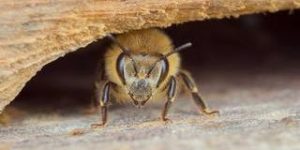Biocides
The use of biocides that kill all kind of organisms, is deeply rooted in the way we try to protect our crops. Beside the chemical agents we use for pest- and disease-control, the pesticides, we use additional biocides for contamination, conservation and as anti-fouling agent. A specific group of pesticides, the fungicides, are widely used as a systematic and non-systematic agent, (working from the inside of the crop or working on the surface of the crop), to fight all kind of undesired fungal infections.
Many agents are not posing an immediate health risc to mankind and animals, but most do form a healt risc factor in the long run.
Since laboratory tests are short term and many times fail to proof a direct causal connection between an agent (or compound) to a specific medical condition, it is very difficult to get a ban on certain agents. Think about the long running discussions about the agents that contain glyfosate…
Biodiversity decline
By the use of the biocides mentioned above, in combination with our modern way of agriculture, livestock farming and landscape management, biodiversity declined rapidly over the last years. The biodiversity decline also combines with the decrease of volume of gestation plants that are important to the bees.
We still have regions with enough gestation plants, but the low diversity is still is detrimental to the bees. There is a close relationship between bee health and biodiversity. Bees use a wide range of plants, fungi and resins for self medication, but their possibilities are limited nowadays.
Spread of bee diseases
As a result of importing and transport of honeybee queens and/or colonies, many bee diseases had the chance to spread around the globe in an unnatural pace. Beside that, diseases and pests can spread easily between colonies because of the close proximity of hives in modern apiaries. The natural distance between wild colonies was always determined by the combination of readily available foodsources, the flight range of queens and/or drones and the behaviour of swarms in certain regions.
The development of natural resistance does not keep pace with the spread of bee diseases due to human intervention.
The impact of “beekeeping”
‘Modern beekeeping’, the way in which bees are kept today (commercial), also plays an important role in bee mortality. Although the beekeeper benefits from healthy bees, there are a number of things that undermine the natural resistance of bees.
We keep the bees in wooden boxes that are especially useful for the beekeeper but are not ideal for a bee population in terms of moisture and temperature regulation.
Furthermore, we “harvest” honey from the bee population and compensate this in terms of energy value with the return of sugar water. Of course, sugar water has hardly any nutritional value.
But even the mere opening of beehives and manipulation of the bee colonies disturbs the calm and the built-up internal bees climate, which causes stress for the bees. The stress influences the behavior of the bees and therefore disturbs the harmony within the colony. The lack of harmony has an impact on both the care of the queen and brood care.
In addition to the above-mentioned care aspects, most beekeepers do not leave room for the natural breeding method of the bee colonies. The swarming of bee colonies is replaced by artificial division of the colonies and open mating is replaced by artificial insemination on a large scale . The natural selection of the strongest queens and drones is replaced by breeding on the preferences of the beekeepers. Short-term successes on properties valued by the beekeeper are achieved, but the long-term effects for the entire species can not be determined. Many beekeepers also use chemical means to combat pests and diseases in the hive. The chemical residues from these agents affect both the adult bees and the brood. Just like with the aforementioned biocides, long-term effects on the bee population are insufficiently recognized. In addition, solving a bee problem with human means harms the development of natural resistance of the bees to the diseases and pests. So…Keeping bees in itself also contributes to the weakening of honey bees, and thus also to the underlying problems of bee mortality.

















